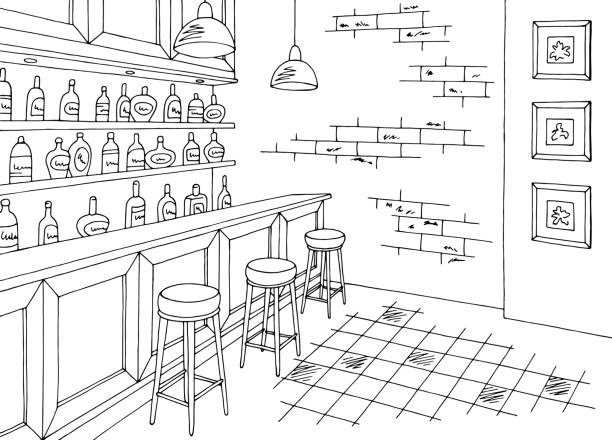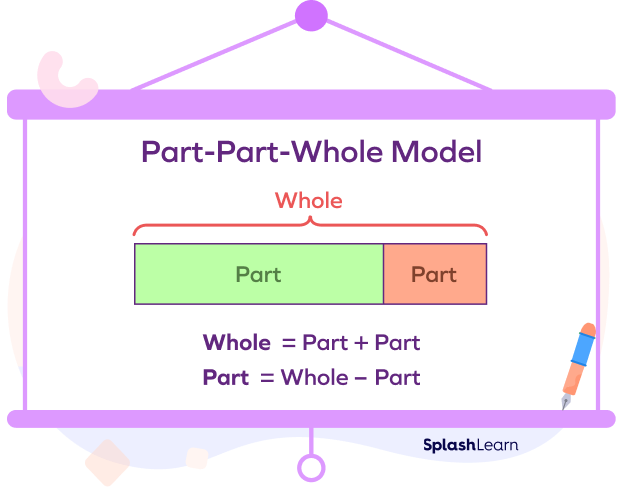Exploring Bar Design Drawing Techniques: A Comprehensive Guide to Envisioning Mathematics Concepts
Bar model attracting strategies function as a valuable resource for both educators and pupils in visualizing mathematical concepts. These designs streamline complicated mathematical relationships, aiding in the understanding of addition, subtraction, division, and reproduction. This guide lays out efficient techniques for carrying out bar designs, fostering active involvement and real-world connections. As readers explore the functional applications and teaching pointers, they will reveal exactly how these techniques can change their method to maths.
Recognizing the Essentials of Bar Design Drawing
Bar design attracting functions as an effective aesthetic device in mathematics, helping with the understanding of analytical techniques and numerical connections. This method involves standing for numbers and their partnerships with rectangle-shaped bars, making it much easier to picture procedures such as addition, division, reproduction, and reduction. Each bar's size represents a details worth, permitting students to contrast quantities and recognize proportions plainly.
To create a bar design, one starts by identifying the issue's crucial elements, typically breaking it down into parts that can be visually stood for. In a straightforward enhancement trouble, 2 bars can be drawn, with their lengths representing the addends. The consolidated length highlights the amount. On top of that, bar designs can be adjusted for extra intricate problems, including ratios and portions, by readjusting the bars as necessary. Mastering these fundamentals lays a solid foundation for efficient problem-solving and deeper mathematical understanding.
Benefits of Making Use Of Bar Designs in Math
Using bar versions in mathematics supplies many advantages that boost learning and understanding. These visual representations help trainees in grasping complicated concepts by breaking them down right into manageable elements. Bar versions give a clear structure for highlighting partnerships in between numbers, making abstract concepts much more concrete. They advertise a much deeper understanding of mathematical procedures and help with problem-solving by allowing learners to visualize the information they are working with.
Furthermore, bar versions sustain the advancement of essential assuming skills, as students must analyze and analyze the aesthetic info to draw final thoughts. This approach urges energetic engagement with the material, strengthening retention and mastery of mathematical principles. By fostering a strong foundation in aesthetic proficiency, bar versions empower students to come close to different mathematical obstacles with self-confidence. Overall, the assimilation of bar versions right into maths education proves useful in cultivating both comprehension and analytical abilities among students.
Using Bar Versions to Enhancement and Subtraction
Bar versions work as a reliable tool for aesthetically representing enhancement and reduction problems. By illustrating the relationship in between numbers, they improve understanding and assist in problem-solving. Furthermore, real-life applications of these designs can aid learners grasp mathematical ideas in practical contexts.
Standing For Addition Aesthetically
When students run into enhancement and reduction problems, aesthetic aids can considerably enhance their understanding of these operations. Bar models work as efficient tools for representing addition. By dividing a rectangular shape right into sections that correspond to the numbers entailed, trainees can visualize the relationship between the amounts. For example, if a student requires to add 3 and 5, they can produce a bar split right into 2 sections: one section representing 3 and the various other standing for 5. This clear representation not only simplifies the enhancement procedure yet additionally strengthens the concept of integrating amounts. As students adjust these aesthetic aids, they develop a much deeper understanding of enhancement, resulting in boosted analytical skills and higher self-confidence in their mathematical abilities.
Reduction With Bar Versions
Reduction is often viewed as a much more intricate procedure than enhancement, bar models can successfully clarify this process for students. By aesthetically representing the amounts involved, pupils can better comprehend exactly how numbers associate to one an additional. In a bar design for subtraction, one bar represents the total amount, while an additional shows the quantity being deducted. This visual distinction helps pupils realize the principle of "taking away." For example, if a bar shows 10 devices, and another bar representing 4 devices is gotten rid of, trainees can conveniently see that 6 devices continue to be. This method not just fosters understanding of subtraction but likewise aids in developing problem-solving skills, allowing pupils to visualize their mathematical thinking and enhance their overall comprehension of mathematical ideas.
Real-Life Application Instances
Understanding subtraction with bar versions lays a foundation for using these techniques in real-life scenarios. In numerous contexts, such as budgeting or shopping, individuals can envision just how much cash remains after expenditures. For instance, if an individual has $50 and spends $20, a bar model can stand for the overall quantity and the invested part, showing that $30 is left. Additionally, moms and dads can use bar designs to aid children comprehend the number of even more things need to be contributed to complete a set, such as having three apples and requiring 5. This graph simplifies complicated problems, facilitating comprehension and retention. Eventually, bar models serve as effective tools in day-to-day decision-making, boosting mathematical understanding in practical circumstances.
Envisioning Multiplication and Department With Bar Versions
In exploring the application of bar designs for reproduction and division, it is necessary to comprehend their foundational ideas. Building reproduction versions allows students to picture relationships in between numbers, while efficient department approaches can be shown via these visual help. This strategy improves comprehension and problem-solving skills in mathematics.
Understanding Bar Models
Bar versions work as an effective visual tool for click here showing the concepts of multiplication and department. They enable students to represent mathematical relationships in a structured style, promoting a much deeper understanding of these operations. In multiplication, bar versions display teams of equal dimension, permitting individuals to envision the total amount when combining these groups. Conversely, in division, bar designs help show how a total is split into smaller sized, equal parts, making clear the principle of dividing. By using these visual help, trainees can comprehend the underlying concepts of multiplication and division better. This strategy not just improves understanding however also supports problem-solving skills, making bar models an invaluable possession in mathematical education and learning.
Building Multiplication Models
Building reproduction versions using bar layouts uses a clear method for visualizing the process of reproduction. These models make it possible for learners to stand for reproduction as teams of equivalent parts, making abstract principles more concrete. As an example, to show (3 times 4), a pupil can draw one bar separated right into three equivalent sections, each standing for 4 systems. Additionally, producing a second bar with the same length enhances the understanding of duplicated enhancement, as each segment represents one team. This graph not just help in understanding reproduction yet likewise boosts analytical skills. By utilizing bar models, trainees can better comprehend relationships in between numbers and develop a robust structure for much more complicated mathematical concepts, resulting in increased self-confidence in their abilities.
Picturing Division Methods

Addressing Word Issues Utilizing Bar Version Techniques

In a trouble involving addition and subtraction, trainees can attract different bars for each amount and then adjust them to locate the solution. This process not just clears up the issue however likewise fosters a much deeper theoretical understanding. Bar versions can be adapted for different kinds of word issues, making them versatile across various mathematical topics. Inevitably, making use of bar designs can greatly boost pupils' analytic abilities by offering a clear visual pathway to come to the appropriate solution.
Integrating Bar Designs in Different Math Topics
Bar models can be perfectly incorporated right into various mathematics subjects, improving trainees' understanding of ideas beyond standard math. In algebra, these aesthetic tools aid in standing for equations and inequalities, enabling learners to picture partnerships between variables. When tackling geometry, bar models can highlight the homes of forms and spatial thinking, helping trainees grasp principles like area and boundary successfully. In statistics, bar models help with the interpretation of information collections, enabling trainees to compare quantities and acknowledge fads visually. In addition, incorporating bar versions within measurement topics help in recognizing units and conversions by offering a substantial representation of amounts. By using bar designs across different mathematical locations, educators can cultivate a deeper comprehension of complex principles, therefore enhancing analytical skills and promoting essential thinking (bar model drawing techniques). This flexibility shows the utility of bar designs as a foundational device for trainees in their mathematical journey
Tips for Training Bar Designs Efficiently
Integrating bar designs right into teaching methods needs thoughtful approaches to optimize their performance. Educators needs to start by introducing bar models with basic, relatable examples that pupils can easily understand. This helps to develop self-confidence and familiarity with the concept. Slowly increasing the intricacy of issues enables learners to apply their skills progressively. Additionally, instructors ought to urge students to develop their own bar versions, promoting energetic involvement and possession of their learning.
Integrating joint activities can additionally enhance understanding, as students go over and address troubles in teams. Continuous responses is necessary; teachers ought to give positive discourse on pupils' bar design representations to assist enhancement. Lastly, attaching bar designs to real-life circumstances enhances their relevance, aiding pupils see the sensible applications of their mathematical abilities. By executing these approaches, instructors can successfully harness the power of bar models in their maths direction.
Frequently Asked Inquiries
Can Bar Designs Be Utilized in Other Subjects Besides Math?
Bar models can certainly be utilized in different subjects past math. They effectively illustrate principles in scientific research, social research studies, and language arts, aiding to aesthetically stand for partnerships, processes, and concepts for enhanced understanding across self-controls.
What Age Is Finest Fit for Learning Bar Models?
Bar models are best suited for children ages 7 to 12, as they develop concrete reasoning skills throughout this duration (bar model drawing techniques). At this age, pupils can properly understand abstract principles with visual representation and analytical techniques
Exist Digital Tools for Creating Bar Designs?

How Can I Assess Trainee Understanding of Bar Designs?
Assessing pupil understanding of bar models can involve tests, observational analyses, and team discussions. Educators might likewise examine students' finished versions and their capability to discuss their reasoning, making sure a complete evaluation of understanding.
What Are Common Errors When Making Use Of Bar Designs?
Common mistakes when making use of bar versions consist of misstating quantities, failing to precisely label bars, puzzling addition and subtraction, overlooking to make use of constant scales, and forgeting the relevance of clear visual separation in between different components.
In addition, bar models can be adjusted for more complicated troubles, including proportions and fractions, by adjusting the bars as necessary. Subtraction is typically perceived as a more complex operation than enhancement, bar models can effectively clarify this process for trainees. In a bar design for reduction, one bar stands for the overall, while another indicates the amount being subtracted. If a bar shows 10 devices, and another bar standing for 4 units is eliminated, students can easily see that 6 systems remain. When splitting a total right into equivalent groups, pupils can draw a lengthy bar to stand for the whole and after that section it right into smaller bars that show each team.